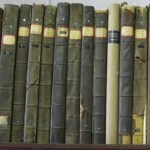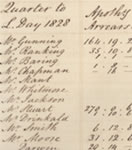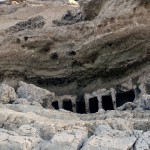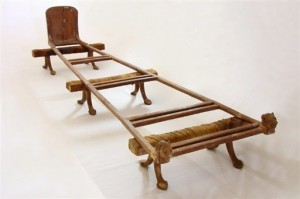 We haven’t known a great deal about Darwin’s college days because all we’ve had in the way of evidence are a registration record or two.
We haven’t known a great deal about Darwin’s college days because all we’ve had in the way of evidence are a registration record or two.
But this year, the 200th anniversary of Darwin’s birth and 150th anniversary of the publishing of On The Origin of Spieces, Honorary Keeper of the Archives and Fellow Commoner, Geoffrey Thorndike Martin, uncovered six financial ledgers from Christ’s College, Cambridge, which include Charles Darwin’s itemized expenses.
They show that Darwin, who studied at Christ’s College between 1828 and 1831, lived the life of a 19th century gentleman and paid people to carry out tasks such as stoking his fire and polishing his shoes. […]
The books also contain accounts for the barber, chimney-sweep, apothecary [pharmacist], porter, brazier [who looked after the fires], glazier, hatter, laundress, linen-draper and painter, among others.
Back then, students purchased goods and services on account and the merchants applied to the college for payment. Then the college just billed the students for these expenses along with its own charges (ie, tuition) on a quarterly basis.
 So now we know that the young Charles Darwin spent more on shoes than he did on books, and that he paid extra for a serving of vegetables with every meal. (The default rations were a joint of some sort of meat and a pint of beer. Srsly.)
So now we know that the young Charles Darwin spent more on shoes than he did on books, and that he paid extra for a serving of vegetables with every meal. (The default rations were a joint of some sort of meat and a pint of beer. Srsly.)
The bills have been digitized and made available to all comers on Darwin Online. I get errors when I try to load the images and text on the site itself, but the pdf files work just fine. They’re image rich and high resolution, though, so they take a while to download.





